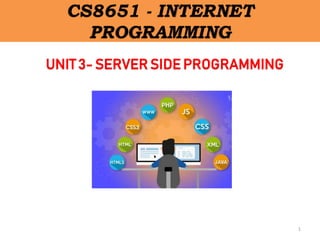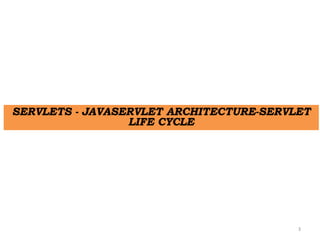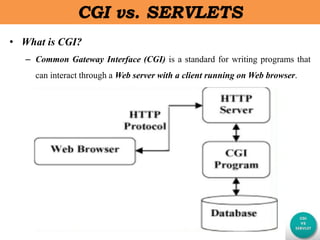This document provides a summary of server-side programming concepts including servlets, session handling, database connectivity using JDBC, and Java Server Pages (JSP). It discusses the servlet life cycle, Apache Tomcat installation, GET and POST methods, cookies, JDBC drivers, and the JSP lifecycle. Key topics covered include how servlets receive and process requests, maintain session state, connect to databases, and how JSP pages are translated and executed on the server-side to generate dynamic web content.


















































